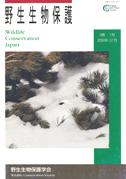Volume 9, Issue 1
Displaying 1-5 of 5 articles from this issue
- |<
- <
- 1
- >
- >|
Original Papers
-
Article type: Original Papers
2004 Volume 9 Issue 1 Pages 1-7
Published: December 27, 2004
Released on J-STAGE: October 04, 2017
Download PDF (602K) -
Article type: Original Papers
2004 Volume 9 Issue 1 Pages 9-22
Published: December 27, 2004
Released on J-STAGE: October 04, 2017
Download PDF (1352K) -
Article type: Original Papers
2004 Volume 9 Issue 1 Pages 23-45
Published: December 27, 2004
Released on J-STAGE: October 04, 2017
Download PDF (2282K) -
Article type: Original Papers
2004 Volume 9 Issue 1 Pages 47-61
Published: December 27, 2004
Released on J-STAGE: October 04, 2017
Download PDF (1594K) -
Article type: Original Papers
2004 Volume 9 Issue 1 Pages 63-76
Published: December 27, 2004
Released on J-STAGE: October 04, 2017
Download PDF (1403K)
- |<
- <
- 1
- >
- >|
